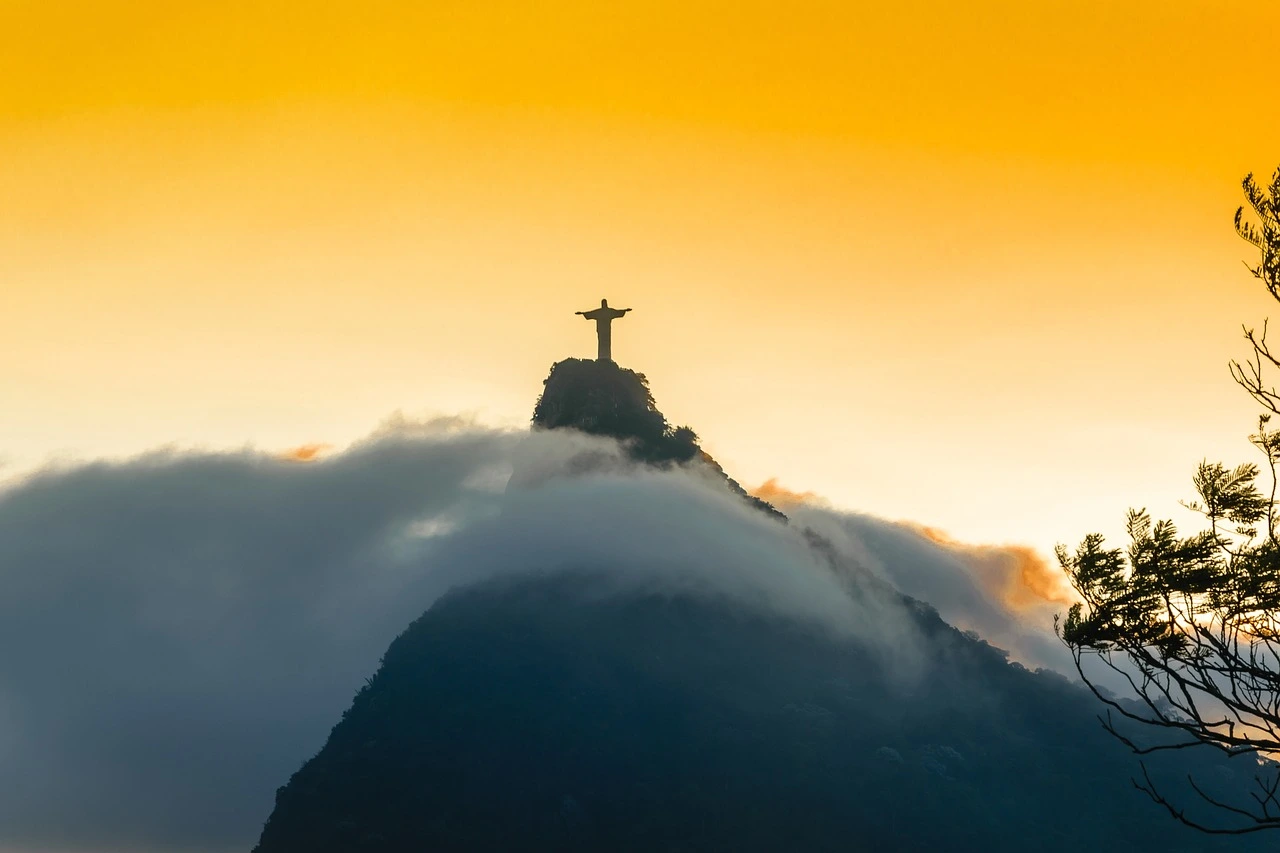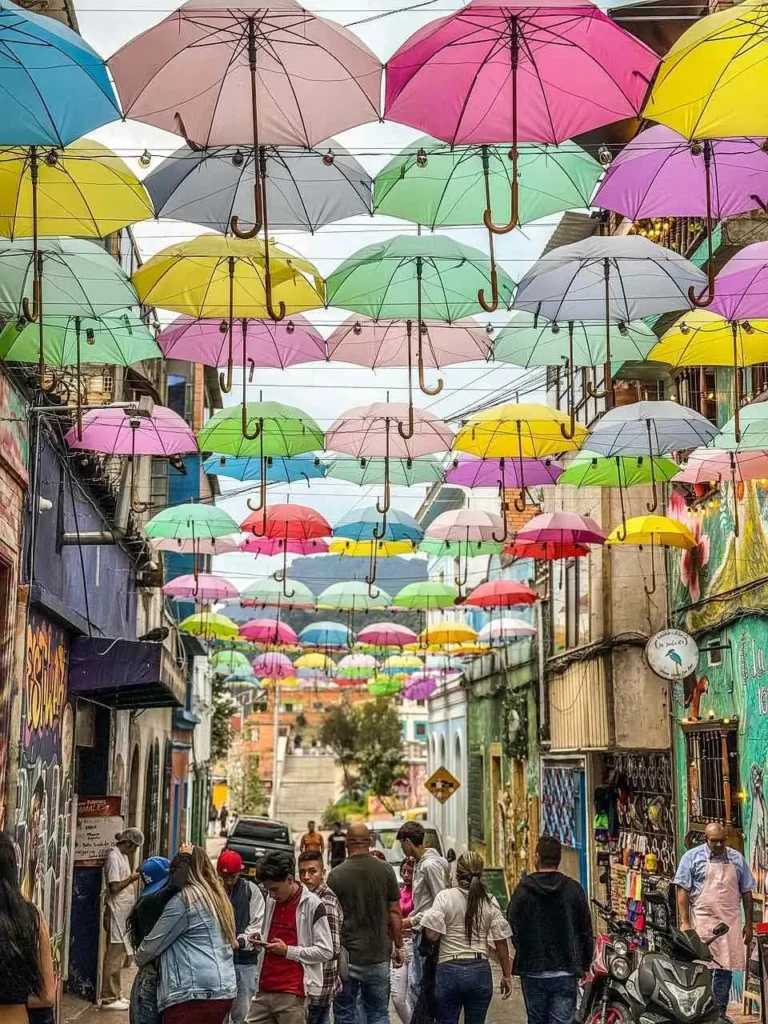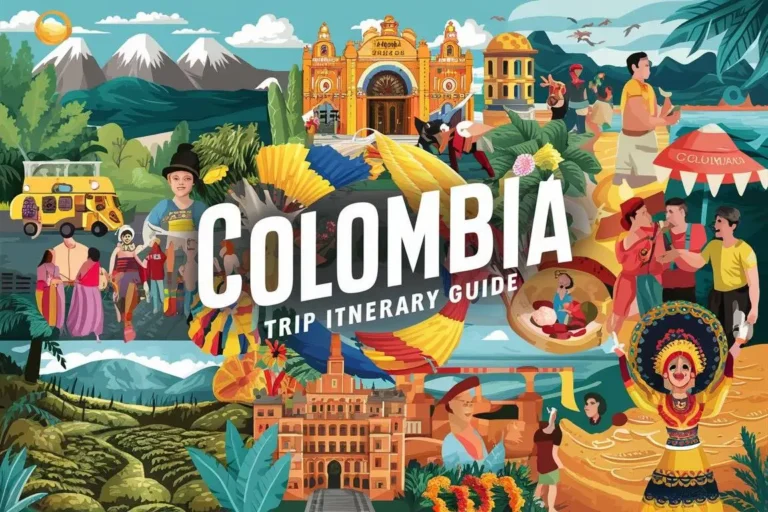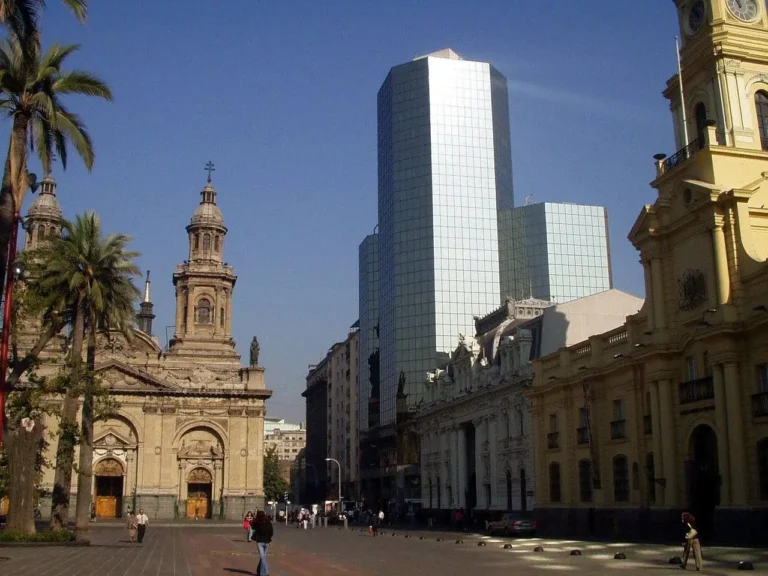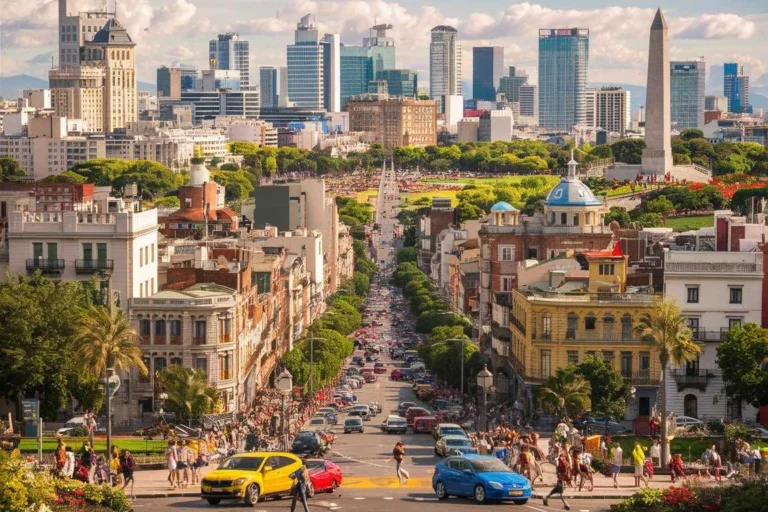Tourist Guide to Brazil: How to Plan Your Perfect 14 Day Trip
Table of Contents
Table of Contents
tourist guide to brazil: Are you ready to dive into the vibrant culture and stunning landscapes of Brazil? Planning a trip here can seem overwhelming. But with the right itinerary, you can see the best of Brazil.
A good brazil travel itinerary is essential for a great 14-day trip. You’ll see everything from Copacabana’s beautiful beaches to the awe-inspiring Iguazu Falls. This article will guide you through planning an amazing journey.
Looking for a chill vacation or an exciting adventure? Our brazil itinerary 2 weeks has you covered. It’s designed to make your trip unforgettable.
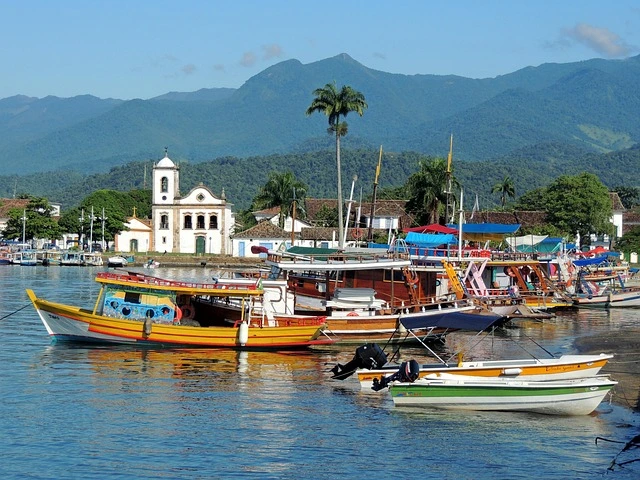
Understanding Brazil: Size, Diversity, and Travel Considerations
When planning your trip to Brazil, it’s key to understand its huge size and diversity. Brazil is a vast and complex place. It offers many experiences for different interests and tastes.
Brazil’s Geographic Scale and Regional Differences
Brazil is the biggest country in South America and Latin America, covering over 8.5 million square kilometers. It has many landscapes, from the Amazon Rainforest in the north to the southeastern coast’s beaches. Knowing these regional differences is important for planning your trip.
Climate Variations and Best Times to Visit
The climate in Brazil changes a lot from north to south. The north is warm and humid, while the south is milder. The best time to visit Brazil depends on where you’re going. For example, the Amazon Rainforest is best in the dry season. The Carnival celebrations in Rio are a big draw for many.
Cultural Diversity Across Regions
Brazil’s culture is as vast as its land. From the Afro-Brazilian influences in Salvador to the Italian and German heritage in the south, each area has its own culture. Knowing these cultural differences can make your trip better. It lets you enjoy the best places to travel in Brazil and what to see in Brazil.
Essential Pre-Trip Planning for Brazil
Before you start your Brazilian adventure, make sure you’re well-prepared. A traveler who is ready faces the challenges and joys of exploring this vast country.
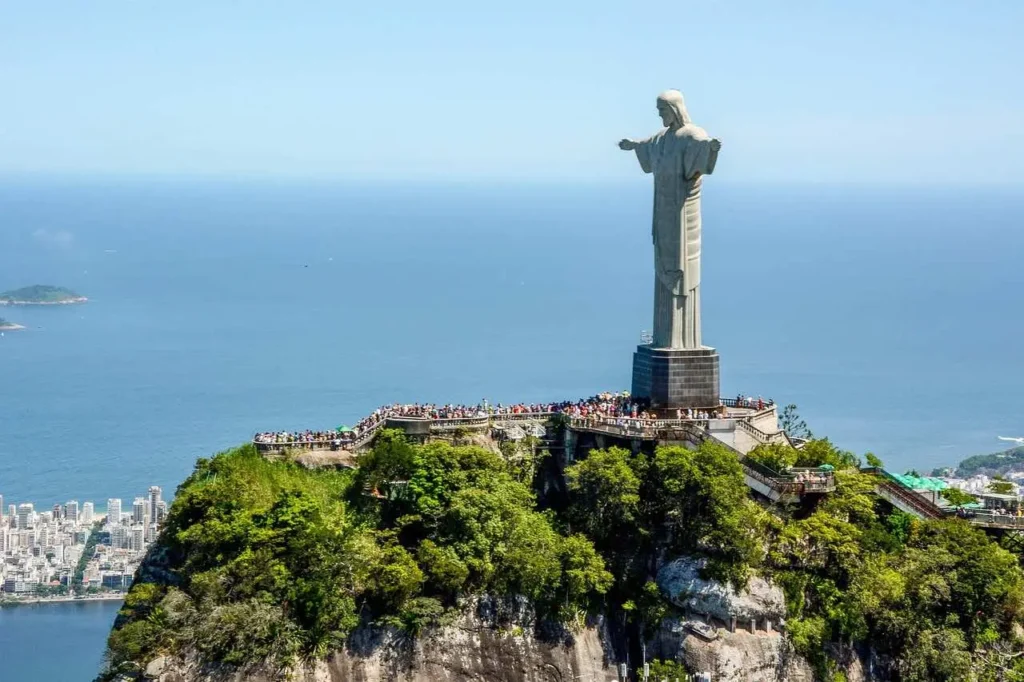
Visa Requirements for American Travelers
As an American, you need to know about Brazil’s visa rules. U.S. citizens can visit Brazil as tourists for up to 90 days without a visa. But, always check the latest visa rules before you go, as they can change.
Vaccination and Health Preparations
Brazil asks for certain vaccinations, like Hepatitis A and yellow fever, for some areas. Talk to your doctor about what shots you need. Also, make sure your regular vaccinations are current.
Currency and Money Matters
The Brazilian Real (BRL) is the local money. Credit cards work in tourist spots, but cash is good for small buys or local transport. You can exchange money when you arrive or use ATMs.
Travel Insurance Recommendations
Think about getting travel insurance for medical issues, trip cancellations, and lost luggage. Choose a policy that covers adventure activities too, if you plan to do them.
By doing these pre-trip tasks, you’ll be ready for a great trip to Brazil. For more tips on planning your brazil travel itinerary, check out our detailed tourist guide to Brazil.
Getting to and Around Brazil
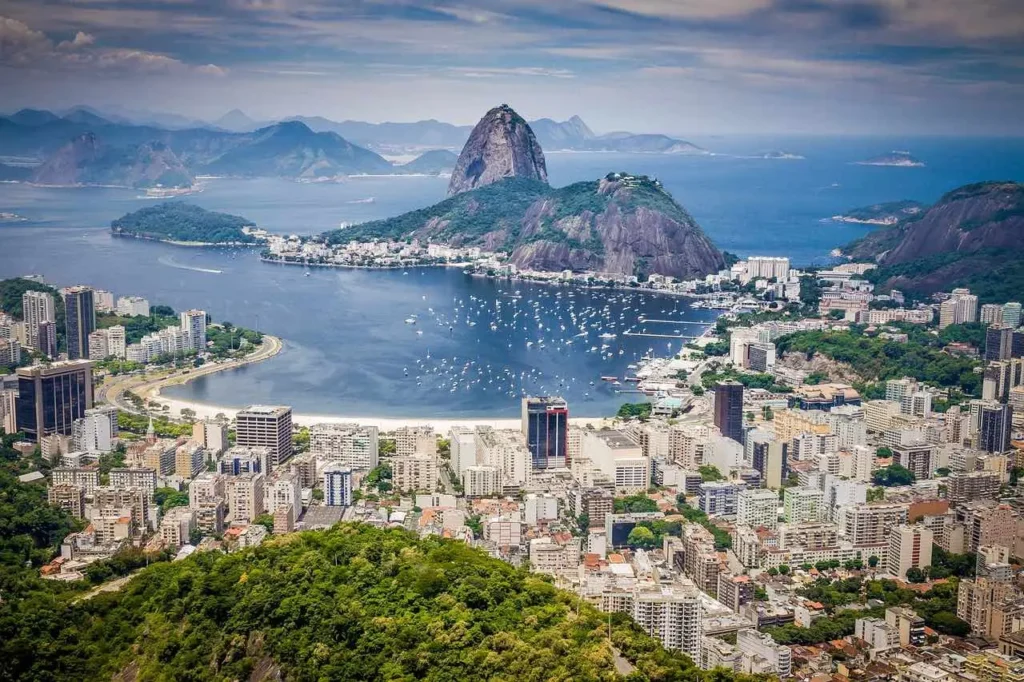
Planning your trip to Brazil is key. The country’s vast size and varied landscapes mean early planning is essential. It can greatly enhance your travel experience.
International Flight Options from the US
Several airlines, including American Airlines, Delta, and LATAM, offer flights to Brazil. You can find direct or connecting flights to places like Rio de Janeiro and São Paulo. Booking early can lead to better deals.
Domestic Travel: Flights vs. Buses vs. Rental Cars
After arriving in Brazil, you have several ways to travel. Flights are fast for long distances. Buses are cheaper and scenic. Rental cars offer freedom, perfect for exploring rural areas or with a group.
Public Transportation in Major Cities
In cities like Rio and São Paulo, public transport is reliable. You’ll find metro lines, buses, and taxis easily. Ride-hailing apps like Uber are also convenient. Knowing the local transport can make you feel like a local.
Safety Tips for American Tourists in Brazil
Brazil is full of life and beauty, but it’s important to stay safe. Knowing about safety can greatly improve your trip.
Understanding Safe Areas vs. Areas to Avoid
Places like Copacabana and Ipanema in Rio are usually safe. But, watch out for pickpockets in crowded spots. It’s best to avoid favelas because they’re not safe.
Practical Safety Precautions
To stay safe, follow these tips:
- Use reputable taxi services or ride-sharing apps.
- Avoid walking alone at night.
- Keep valuables secure and consider using hotel safes.
Emergency Contacts and Resources
If you need help, call 190 for police or 192 for medical help. Sign up for the U.S. Department of State’s Smart Traveler Enrollment Program (STEP) for updates on Brazil’s safety.
By being careful and aware, you can enjoy Brazil’s beauty. See the amazing beaches and cultural festivals. And find out what to see in Brazil safely.
Language Navigation: Portuguese Basics and Communication Tips
Getting ready for your trip to Brazil? Learning the local language can make your trip better. Many Brazilians in the tourist industry speak some English. But, knowing a few Portuguese phrases can make your journey smoother and more fun.
Essential Portuguese Phrases for Travelers
Learning basic phrases like “obrigado/obrigada” (thank you), “sim/não” (yes/no), and “por favor” (please) is helpful. Here are some key phrases to start with:
- Olá – Hello
- Bem-vindo/Bem-vinda – Welcome
- Desculpe – Excuse me
- Com licença – Excuse me (to get attention)
Using Translation Apps and Services
For more complex talks, try translation apps like Google Translate. These apps help you understand menus, signs, and conversations. Some apps work offline, which is great in places with no internet.
English Accessibility in Tourist Areas
In big tourist spots, English is more common, mainly among the young and service workers. But, learning some Portuguese lets you dive deeper into the culture and talk with locals.
With basic Portuguese phrases and translation apps, you’ll feel like a local in Brazil. This will make your trip even better, as our tourist guide to Brazil shows.
Accommodation Options Across Brazil
Brazil has many places to stay, from luxury to budget-friendly. You can find something that fits your needs and budget here.
Luxury Resorts and Boutique Hotels
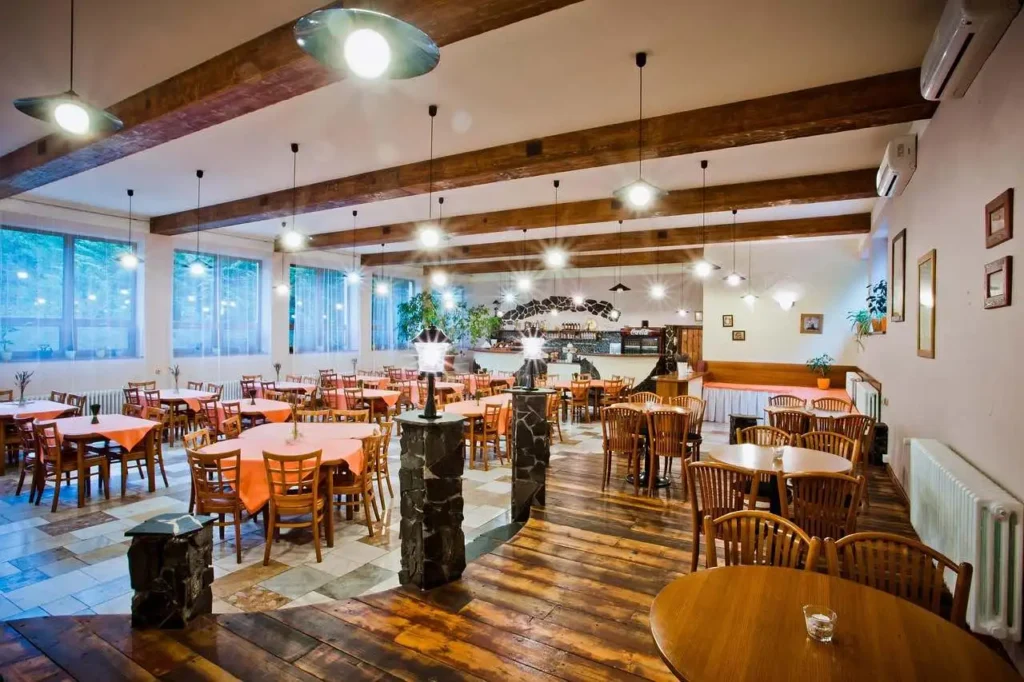
Brazil has luxury resorts and boutique hotels for a high-end stay. They offer great amenities and services. You can find them in beautiful spots like beaches or city centers.
Some top places include the Belmond Copacabana Palace in Rio de Janeiro and the Grand Hyatt in São Paulo.
Budget-Friendly Hostels and Pousadas
For those on a tight budget, hostels and pousadas are good choices. They offer a social vibe and basic needs. You can find them in big cities like Rio and São Paulo, or in quieter spots.
Vacation Rentals and Unique Stays
For a real local feel, try vacation rentals or unique places like eco-lodges. Airbnb has many options across Brazil. It lets you live like a local during your Brazil travel itinerary.
Comprehensive Tourist Guide to Brazil: Must-See Destinations
Brazil is a country full of vibrant culture and stunning landscapes. It promises an unforgettable travel experience. There are many must-see destinations to consider, each showing a unique side of Brazil’s heritage and beauty.
Rio de Janeiro: Beaches, Christ the Redeemer, and Sugarloaf Mountain
Rio de Janeiro is famous for its stunning beaches and landmarks. Places like Copacabana and Ipanema beaches, Christ the Redeemer, and Sugarloaf Mountain are must-sees. These attractions make Rio a top destination for travelers looking for culture, adventure, and relaxation.
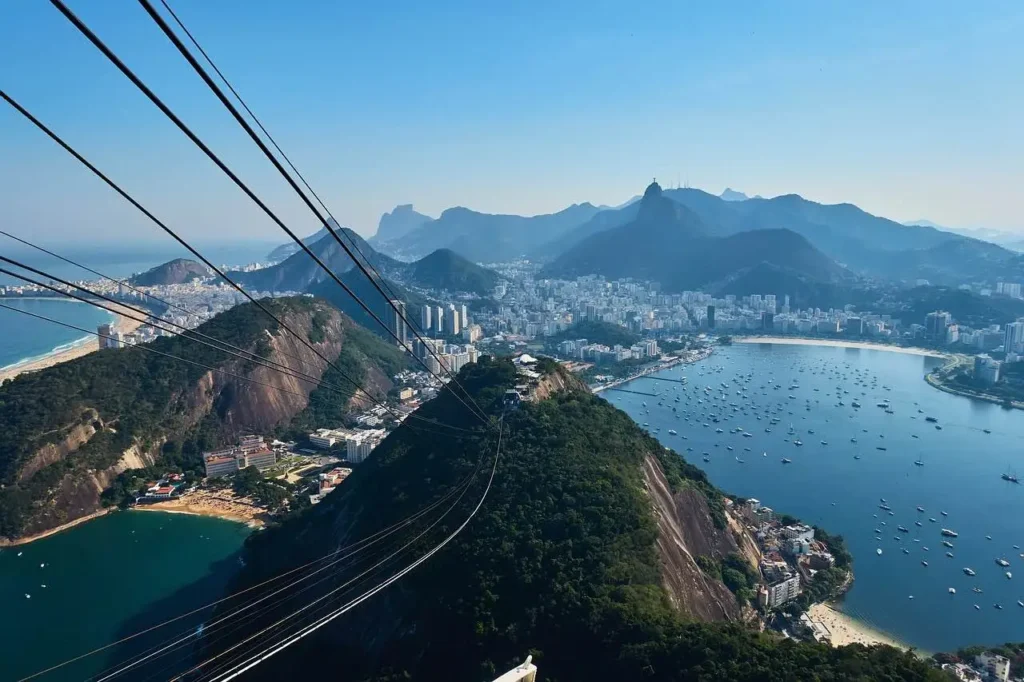
São Paulo: Cultural Attractions and Culinary Scene
São Paulo is Brazil’s largest city and a cultural melting pot. It offers a rich culinary scene and many cultural attractions. Visitors can explore diverse neighborhoods, such as Liberdade for Japanese culture or Vila Madalena for street art, making it fascinating for urban explorers.
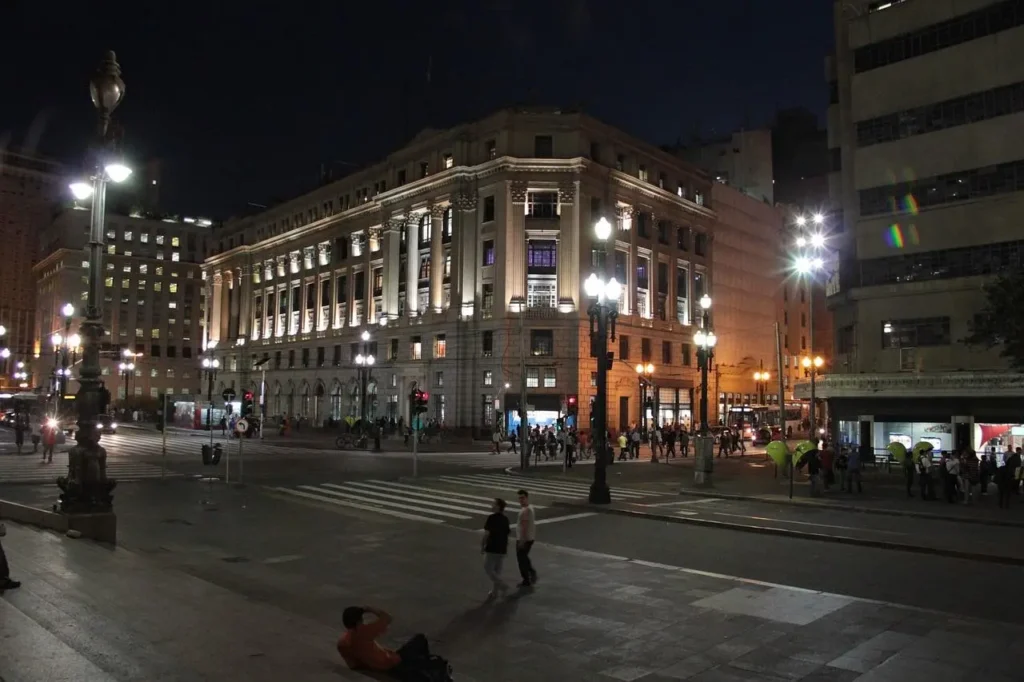
Salvador: Afro-Brazilian Culture and Colonial Architecture
Salvador, the capital of Bahia, is known for its Afro-Brazilian culture and colonial architecture. The historic center, a UNESCO World Heritage Site, is a must-see. It has colorful buildings, cobblestone streets, and a lively cultural scene.

Amazon Rainforest: Eco-Tourism Adventures
The Amazon Rainforest is a significant ecosystem with unparalleled eco-tourism opportunities. Travelers can explore the rainforest’s vast biodiversity through guided tours. They can stay in eco-lodges and experience the unique flora and fauna of the Amazon.
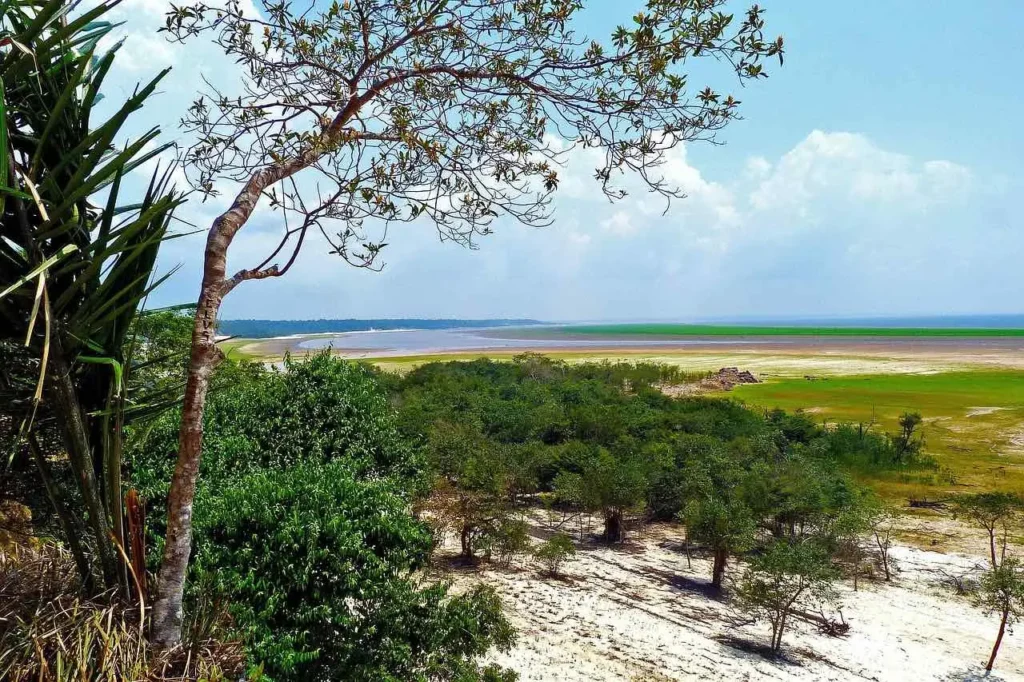
Iguazu Falls: Natural Wonder Experience
Iguazu Falls, on the Brazil-Argentina border, is a world-famous waterfall. Visitors can enjoy hiking, boat tours, and helicopter rides to see the falls’ grandeur. It’s a thrilling destination for nature lovers.
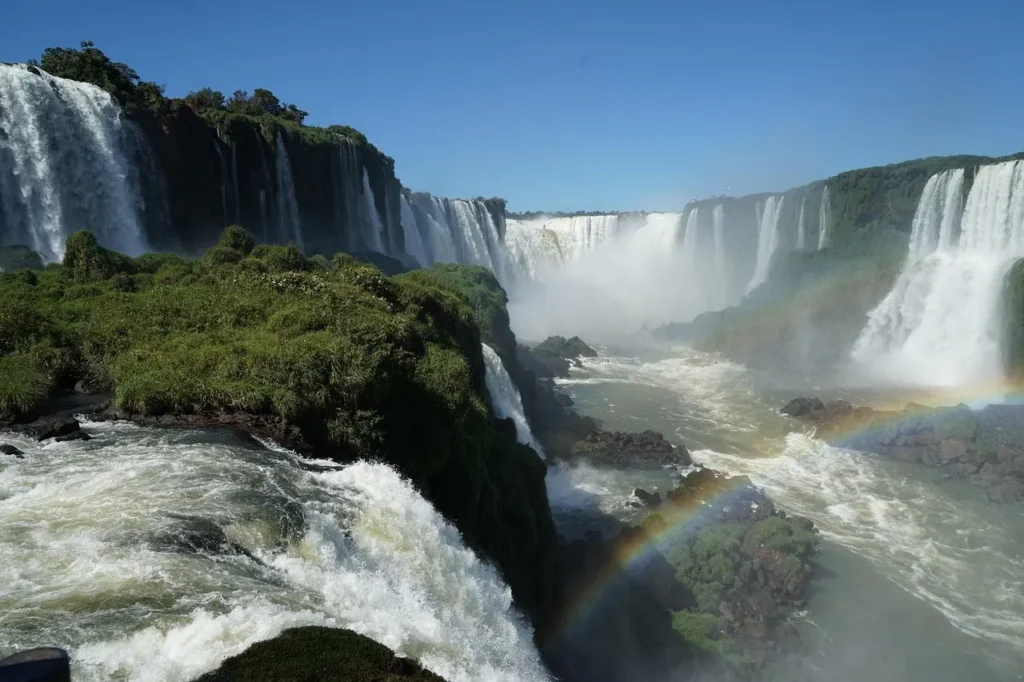
Fernando de Noronha: Pristine Beaches and Marine Life
Fernando de Noronha is an archipelago off Brazil’s northeastern coast. It’s known for its pristine beaches and rich marine life. The protected area is ideal for snorkeling and diving, showing the diverse underwater world of the Atlantic Ocean.
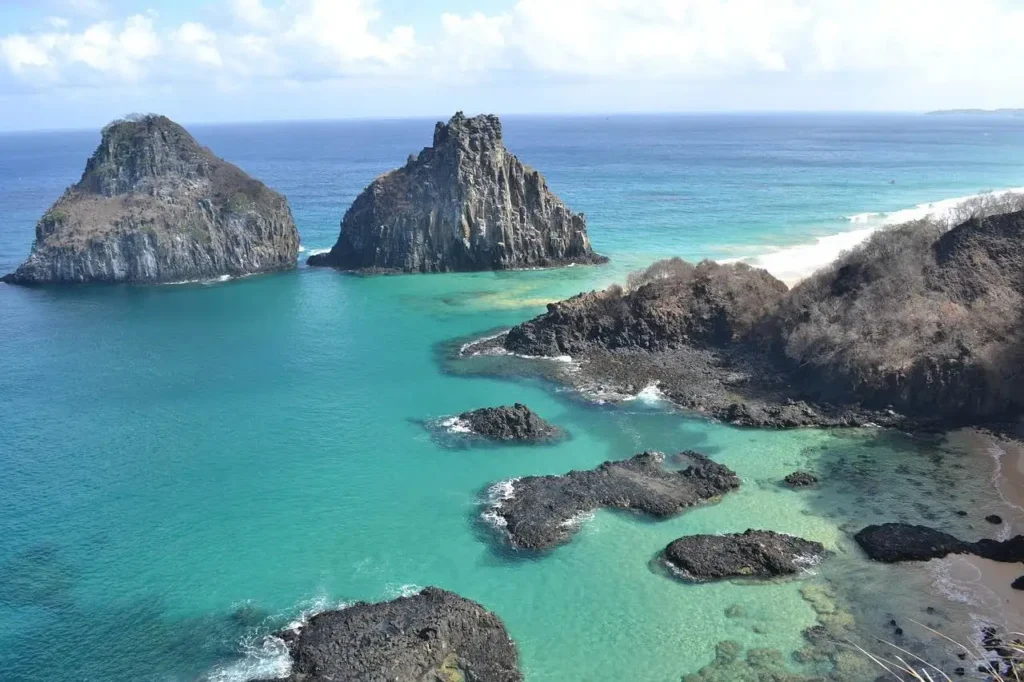
These destinations are just a few of the many must-see places in Brazil. They showcase the country’s incredible diversity, making it a compelling destination for travelers worldwide.
What to See in Brazil: Hidden Gems and Unique Experiences
Exploring Brazil reveals a world beyond the usual tourist spots. The country’s varied regions offer unique experiences. These highlight its rich culture and stunning natural beauty.
Off-the-Beaten-Path Destinations
Brazil has many hidden gems worth visiting. Some of these include:
- The Chapada Diamantina region, known for its stunning landscapes and outdoor activities.
- The historic town of Paraty, with its cobblestone streets and colonial architecture.
- The Lencois Maranhenses National Park, featuring unique sand dunes and freshwater lagoons.
Cultural Festivals and Events
Brazil is known for its lively cultural festivals. Some highlights include:
- The Festa do Divino Espírito Santo in various towns, celebrating music, dance, and local traditions.
- The Parintins Folklore Festival, showing off the Amazon region’s rich cultural heritage.
Authentic Local Experiences
To really experience Brazil, dive into local culture by:
- Visiting local markets, such as the Mercado Municipal in São Paulo.
- Trying traditional dishes like feijoada or acarajé at local spots.
Wildlife Viewing Opportunities
Brazil is a haven for wildlife. Don’t miss the chance to see:
- Sea turtles nesting on Fernando de Noronha‘s beaches.
- Jaguars and macaws in the Pantanal, one of the world’s largest tropical wetlands.
Brazilian Cuisine: What and Where to Eat
As you start your Brazilian adventure, get ready for a food journey. Brazilian food mixes indigenous, African, and European tastes. It offers a wide range of flavors and dishes to enjoy.
Regional Specialties Worth Trying
Brazil’s regions have their own special dishes. In the north, try Amazonian fish dishes and exotic fruits like açaí. In the northeast, enjoy moqueca, a seafood stew with coconut milk. In the south, don’t miss churrasco, a barbecue with grilled meats.
Street Food Safety and Recommendations
Street food is a big part of Brazilian cuisine. To eat safely, choose stalls with lots of customers. Look for places where food is handled well. Try coxinha (fried dough with chicken) and acarajé (fried dough with shrimp or peanut sauce).
Dining Etiquette and Tipping Practices
When dining in Brazil, say “Bom apetite!” (Enjoy your meal!). Tipping is expected, around 10% of the bill. In fancy places, a service charge might be added.
Exploring Brazil as part of your brazil travel itinerary means trying new foods and drinks. Dive into the local cuisine and enjoy the flavors.
Best Places to Travel in Brazil for Different Interests
Brazil has something for everyone, whether you want to relax, dive into culture, or seek adventure. Its diverse regions meet a wide range of traveler interests. This ensures your trip is unforgettable and rewarding.
For Beach Lovers: Coastal Paradises
Brazil’s coastline boasts stunning beaches, each with its own charm. Fernando de Noronha is perfect for those who love pristine waters and marine life. Búzios and Balneário Camboriú are great for those who enjoy a lively party scene. For a quiet beach experience, the Amazon River coast is untouched and serene.
For History Buffs: Colonial Towns and Cultural Sites
Salvador and Olinda are must-visits for history buffs. They have well-preserved colonial architecture and a rich Afro-Brazilian culture. São Luís is also a treasure, with its historic center recognized by UNESCO. These towns show Brazil’s history through their streets, churches, and festivals.
For Adventure Seekers: Outdoor Activities and Extreme Sports
Adventure seekers will find plenty in Brazil. Chapada Diamantina offers trekking, rappelling, and caving. Bonito is famous for its clear waters for snorkeling and diving. For extreme sports, Barra da Tijuca in Rio de Janeiro is perfect for surfing and kiteboarding.
For Nature Enthuasiasts: National Parks and Ecological Reserves
Nature enthusiasts will be amazed by Brazil’s ecosystems. The Amazon Rainforest is a must-see for its biodiversity. Lencóis Maranhenses National Park features sand dunes and freshwater lagoons. For birdwatching and wildlife spotting, Pantanal is the world’s largest tropical wetland, with guided tours and lodges.
Brazil Itinerary 2 Weeks: Day-by-Day Breakdown
A 2-week trip to Brazil is an exciting adventure. You’ll see famous cities, historical sites, and natural wonders. This guide will help you discover the best of Brazil.
Days 1-4: Rio de Janeiro Exploration
Rio de Janeiro is a great starting point. It has beautiful beaches and famous landmarks.
Day 1: Arrival and Copacabana
When you arrive in Rio, check into your hotel. Spend the day at Copacabana Beach and explore nearby.
Day 2: Christ the Redeemer and Santa Teresa
See the Christ the Redeemer statue, a world wonder. Then, visit Santa Teresa in the afternoon.
Day 3: Sugarloaf Mountain and Ipanema
Go to Sugarloaf Mountain by cable car for amazing views. Enjoy Ipanema’s culture and nightlife.
Day 4: Tijuca Forest and Cultural Experiences
Discover the Tijuca Forest. Also, visit the Museu de Arte Moderna (MAM) to see Rio’s culture.
Days 5-7: São Paulo City Break
São Paulo is a city full of cultures. It’s waiting for you.
Day 5: Travel and City Introduction
Get to São Paulo and learn about its different areas.
Day 6: Museums and Cultural Attractions
See the Museu de Arte de São Paulo (MASP). Explore the city’s cultural spots.
Day 7: Culinary Tours and Nightlife
Try São Paulo’s food and enjoy its lively nightlife.
Days 8-10: Salvador’s Historical Charms
Salvador is known for its Afro-Brazilian culture. It’s a place you must see.
Day 8: Travel and Pelourinho District
Go to Salvador and check out the Pelourinho District.
Day 9: Beaches and Afro-Brazilian Culture
Enjoy Salvador’s beaches and learn about Afro-Brazilian culture.
Day 10: Day Trip to Nearby Coastal Towns
Visit coastal towns for more beach time and exploration.
Days 11-14: Natural Wonders Finale
The last part of your trip is about Brazil’s natural wonders.
Days 11-12: Iguazu Falls Experience
See the stunning Iguazu Falls, a world-famous waterfall.
Days 13-14: Amazon Rainforest or Beach Relaxation
Choose to explore the Amazon Rainforest or relax on Northeast beaches.
This 2-week trip mixes city life, culture, and nature. It’s a memorable journey to Brazil.
Conclusion: Making the Most of Your Brazilian Journey
This guide has given you all you need to know for your 14-day trip to Brazil. You now understand the country’s size, diversity, and travel tips. You also know how to handle language barriers and find great places to stay.
With a solid plan, you can see Brazil’s top spots like Rio de Janeiro, São Paulo, and Salvador. You’ll also discover hidden gems and cultural events. Brazil has something for everyone, whether you love beaches, history, or adventure.
Remember to stay safe and respect local customs as you explore Brazil. This guide has prepared you to dive into Brazil’s vibrant culture, stunning landscapes, and friendly people.
FAQ
-
What is the best time to visit Brazil?
The best time to visit Brazil varies by region. The dry season, from May to September, is ideal for most areas. For the Amazon Rainforest, visit from June to November. Beach destinations are best in the summer, from December to March.
-
Do I need a visa to travel to Brazil?
As an American, you don’t need a visa for up to 90 days for tourism or business. Just make sure your passport is valid for at least six months after your planned departure.
-
What are the must-try foods in Brazil?
Brazilian food is rich and varied. Try feijoada, churrasco, açaí, and brigadeiros. Street food is also a must-try, as it’s tasty and affordable.
-
How do I get around in Brazil?
Brazil has a good transportation system. You can fly, take buses, or rent cars for domestic travel. In big cities, use the metro and buses. Taxis and ride-hailing are also common.
-
Is Brazil safe for tourists?
Brazil has safe and unsafe areas. Tourist spots are generally safe, but be cautious. Avoid carrying too much cash and use trusted transport.
-
What are some off-the-beaten-path destinations in Brazil?
Brazil has many hidden spots. Visit Paraty for its old buildings, Lençóis Maranhenses National Park for unique views, or Fernando de Noronha for beautiful beaches and sea life.
-
Can I use English in Brazil?
Portuguese is official, but many in tourism speak English, mainly in big cities. Learning some Portuguese can make your trip better.
-
What is the best way to plan a 2-week trip to Brazil?
Plan your 2-week trip by choosing your favorite spots. Mix city life, culture, and relaxation. Consider visiting Rio, São Paulo, and either Salvador or the Amazon Rainforest.
explore Unmissable Things to Do in Buenos Aires: 33 Authentic Experiences

